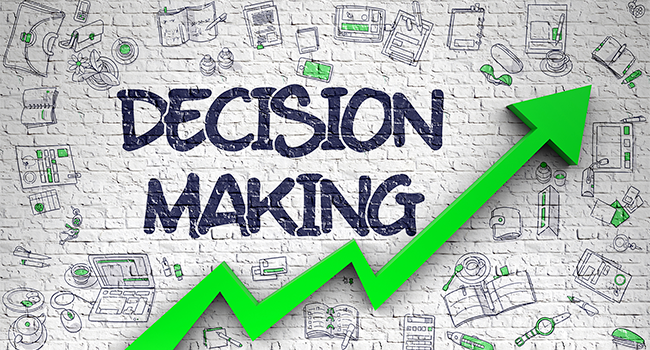
Introduction
Have you ever wished you could fast-forward to see the results of a choice before you make it? Mental time travel lets you do just that. By using your mind to “visit” the past or future, you can improve your decision-making abilities. In this article, we’ll explore easy, fun techniques to practice mental time travel. You’ll learn how to picture your future self, reflect on past experiences, and choose wisely. These simple steps work for school, work, and life. Ready to travel through time—without a machine? Let’s begin!
What Is Mental Time Travel?
Mental time travel is our brain’s natural power to recall memories and imagine future events. Scientists call this episodic future thinking. When you remember a birthday party, that’s mental time travel to the past. When you imagine your graduation, that’s mental time travel to the future. Both abilities help your decision-making abilities by giving you context:
- Past Travel: Learn from mistakes.
- Future Travel: Anticipate outcomes.
Together, looking back and forward helps you pick better paths today.
Technique 1: Future Self Visualization
Step 1: Find a Quiet Spot
Sit comfortably and close your eyes. Take three slow, deep breaths.
Step 2: Picture Your Future Self
Imagine yourself five years from now. How do you look? What are you doing? Where do you live? Add small details—clothes, room, sounds.
Step 3: Ask Key Questions
- What choices led you here?
- What daily habits matter most?
- How do you feel about your life today?
By seeing a clear future you care about, you gain motivation and direction. This boosts your decision-making abilities, because you weigh choices against your ideal future.
Technique 2: Timeline Projection
Step 1: Draw Your Personal Timeline
On paper, mark “Now” in the center. To the left, list three past events that shaped you. To the right, list three desired future goals.
Step 2: Connect the Dots
Draw arrows from past lessons to future goals. For example, if you learned study habits in middle school (past), link that to graduating with honors (future).
Step 3: Evaluate Decisions
When a new choice appears—like picking a club or project—place it on your timeline. Will it move you closer to your goals or pull you off track?
This visual map uses episodic future thinking and memory recall to guide smarter choices.
Technique 3: Backward Reasoning
Backward reasoning starts from a future goal and works backward to today’s steps.
Step 1: Choose a Goal
Pick one goal you want to achieve soon, like acing a test or saving money.
Step 2: Identify Milestones
List the milestones between today and the goal. If your goal is a test, milestones could be studying one chapter each day.
Step 3: Plan in Reverse
Start at the goal date and schedule milestones in reverse order. This ensures you have time for each step.
By moving backward, you spot possible obstacles early. This clear plan strengthens your decision-making abilities and reduces stress.
Technique 4: Pre-Mortem Analysis
A pre-mortem turns potential failures into success safeguards.
Step 1: Imagine Failure
Pick an upcoming project or decision. Imagine it failed completely. Write down reasons why it failed.
Step 2: Brainstorm Solutions
For each reason, list a solution or prevention strategy. If you “forgot to study,” plan daily reminders.
Step 3: Implement Safeguards
Add these solutions into your plan. Now, you’ve turned worries into actions that protect your goal.
Pre-mortem taps into episodic future thinking by imagining a negative outcome first. This makes your decisions tougher and more reliable.
Technique 5: Decision Journaling
Step 1: Keep a Journal
Buy a small notebook or use an app. Each time you make a decision, write down:
- The decision you face
- Options you consider
- Why you lean one way
Step 2: Record Outcomes
After the decision plays out, note what happened. What went right? What went wrong?
Step 3: Review Weekly
Once a week, read past entries. Did patterns emerge? Which decisions led closer to your goals?
Journaling merges past reflection and future planning. Over time, you’ll see clear links between choices and outcomes—supercharging your decision-making abilities.
Why These Techniques Work
Researchers have found that mental time travel:
- Builds Empathy with Your Future Self
When you care about your future self, you make healthier, wiser choices now. - Strengthens Memory Networks
Remembering past events helps your brain link experiences, making future predictions stronger. - Reduces Impulsive Decisions
Imagining future outcomes slows you down, giving room for thought. - Boosts Motivation
Clear visions of success energize you to act.
By practicing these techniques, you train your brain to balance past lessons and future goals. Better balance means better choices every day.
Tips for Success
- Start Small: Try one technique with a minor decision, like picking weekend plans.
- Be Consistent: Practice daily for five minutes to build the habit.
- Stay Positive: Focus on helpful outcomes, not fears.
- Combine Methods: Use timeline projection and journaling together for deeper insight.
With time, mental time travel becomes second nature, and your decision-making abilities will shine.
Conclusion
Mental time travel is like a superpower for your brain. By using episodic future thinking and memory-based methods, you gain clear vision for decisions. Techniques like future self visualization, timeline projection, and pre-mortem analysis turn abstract choices into concrete plans. Journaling cements lessons from the past and fuels smarter steps forward. These simple, fun tools boost confidence, cut stress, and sharpen your decision-making abilities. Try them today—pick one technique, practice for a week, and watch your choices transform. The future you imagine can become the future you live.








